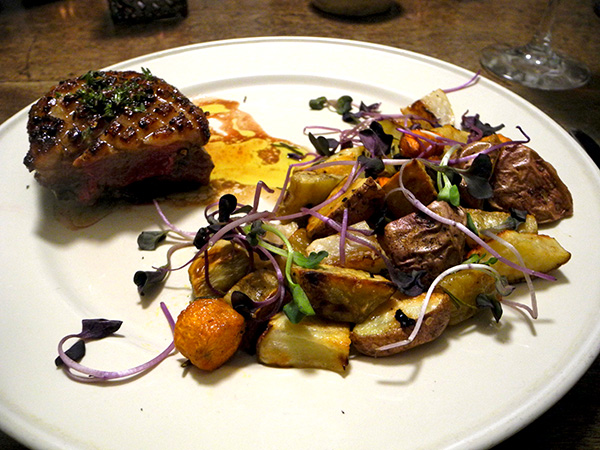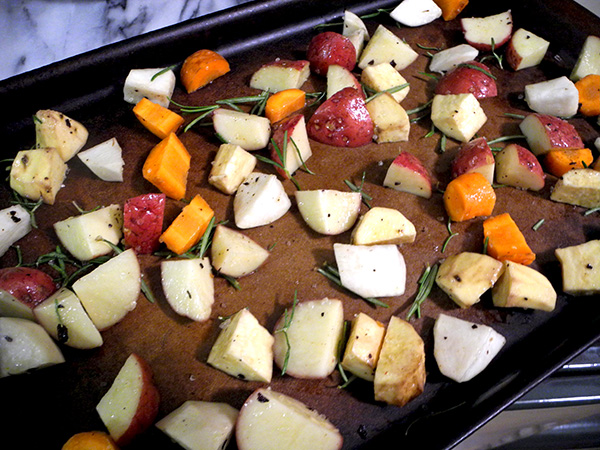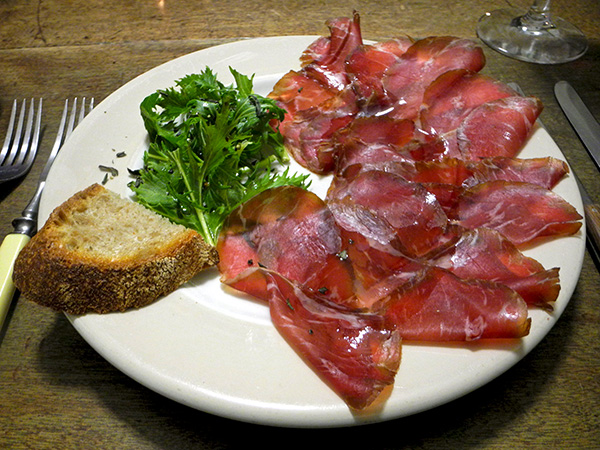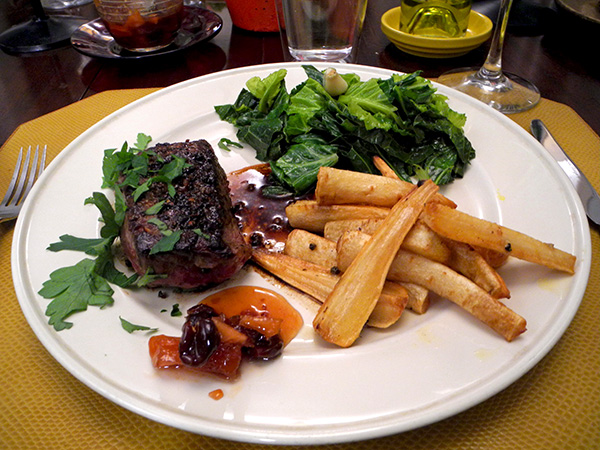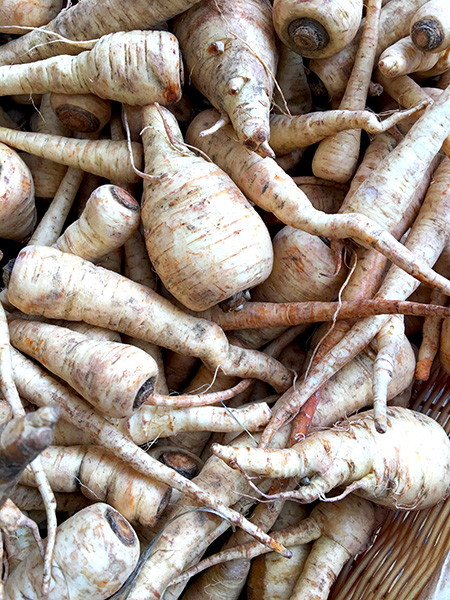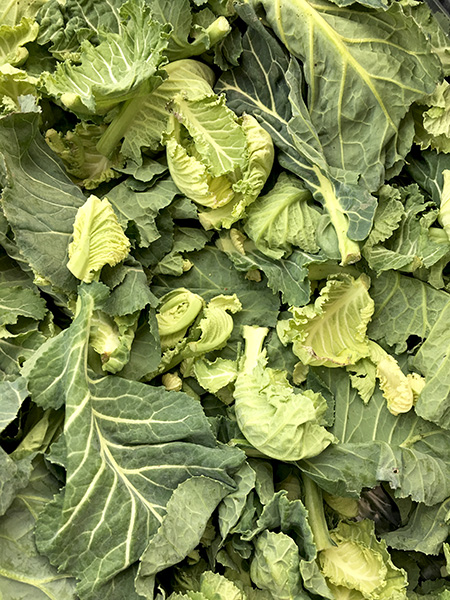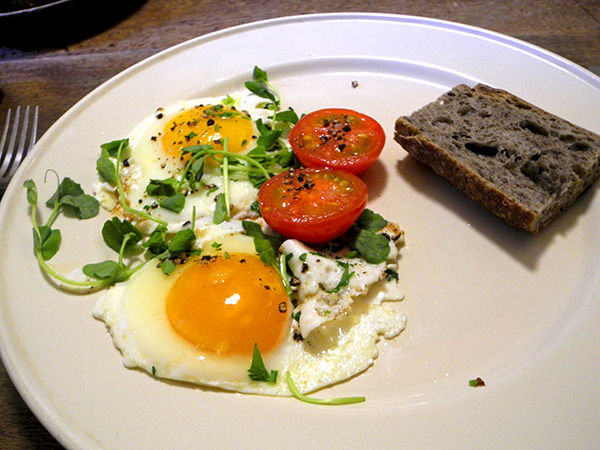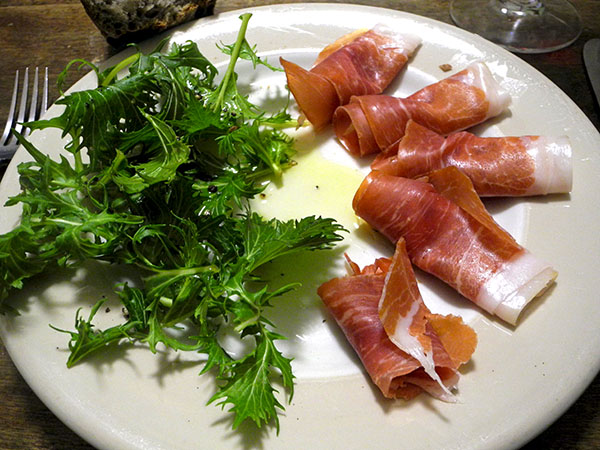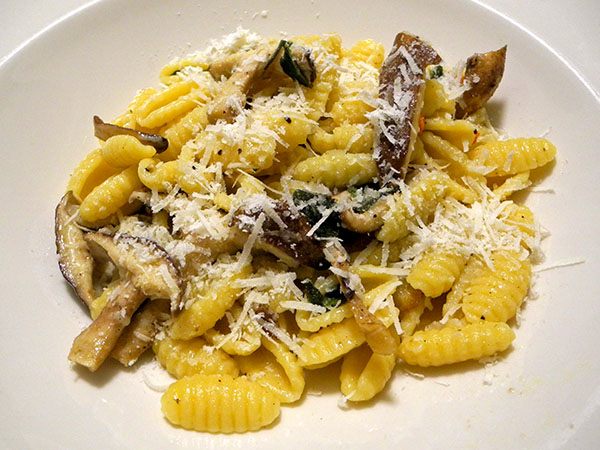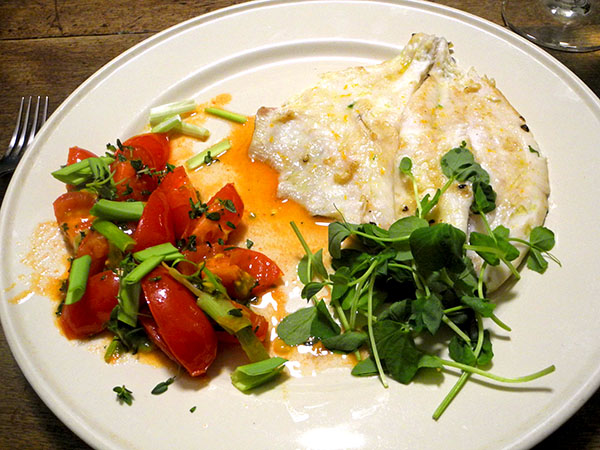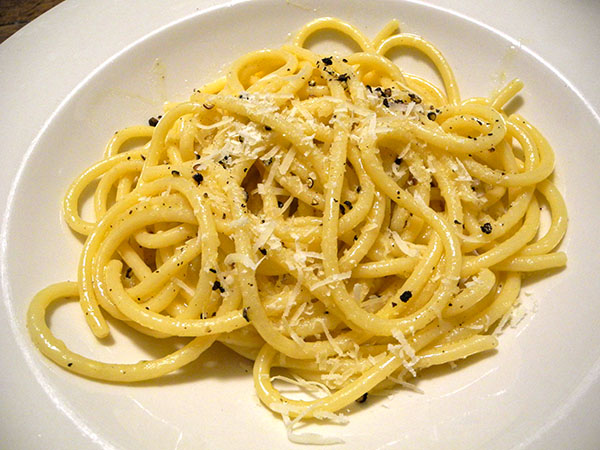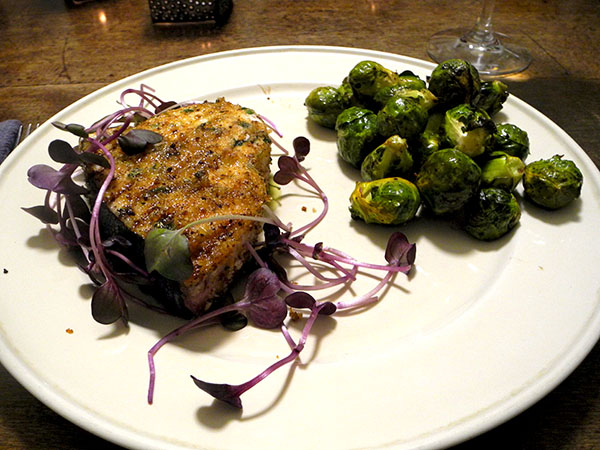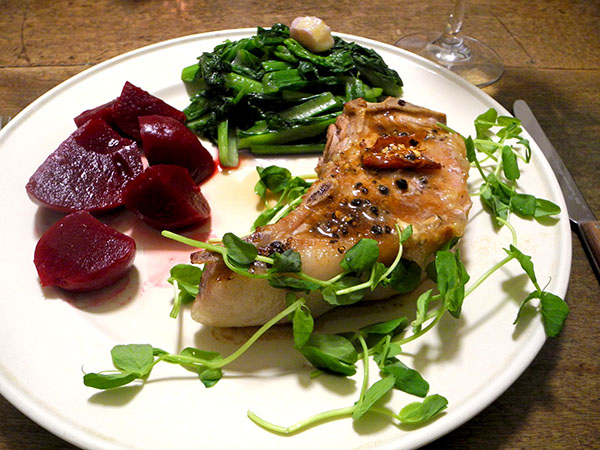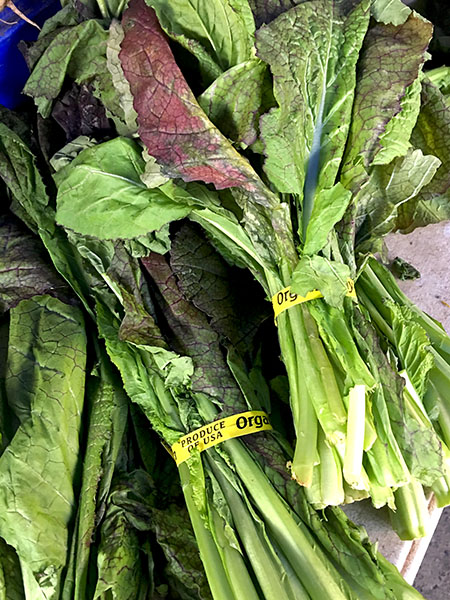
Fish and potatoes, also dried habanada, and micro scallions. There was also the 3 mini cabbage, with some Italian stuff, but I think this entrée was still nothing like anyone’s mother used to make.
- two 8-ounce cod fillets from American Seafood at the Union Square Greenmarket (mostly using a recipe from Mark Bittman I first came across almost 12 years ago), laid on a bed of coarse sea salt, then completely covered with more salt, and set aside while about a pound of Carola potatoes from Max Hatchery (yellow flesh, creamy), were sliced to a thickness of about 1/4 inch, tossed in a large bowl with a tablespoon of olive oil, some dried heatless, orange Habanada pepper from Norwich Meadows Farm, salt, and pepper, arranged overlapping in a glazed ceramic baking pan, cooked for 30 minutes or so in a 400º oven (or until they were tender), and near the end of that time the cod was rinsed in several changes of water and dried before being placed in the pan on top of the potatoes, topped with a little olive oil and sprinkled with some freshly-ground pepper, returned to the oven for 12 or 14 minutes (the time would depend on the thickness of the cod), arranged on 2 plates, and finished with a scattering of micro scallion from Two Guys from Woodbridge
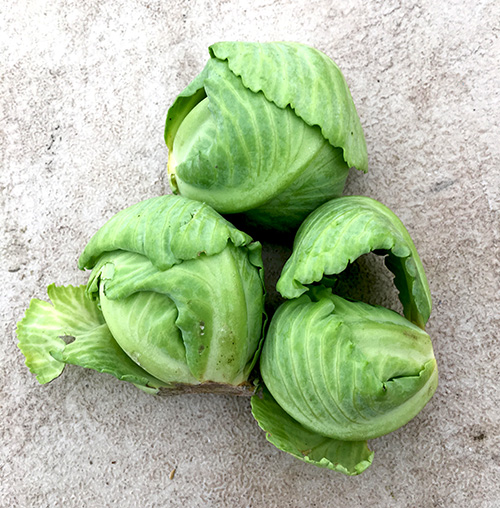
- three tiny white cabbages (3 or 4 inches in diameter) from Keith’s Farm, cut as a chiffonade, quickly heated in a tin-lined copper pot where a bit of olive oil had already been heated to soften some sliced garlic from Stokes Farm and warm a pinch or two of crushed Italian fennel seed, the cabbage finished on the plates with a sprinkling of lightly-toasted pine nuts from Whole Foods,
- the wine was a California (Carneros) white, La Tapatia Chardonnay Carneros 2015, from Naked Wines
- the music was, once again, WKCR streaming, its 9-day ‘Bach Festival 2016,
